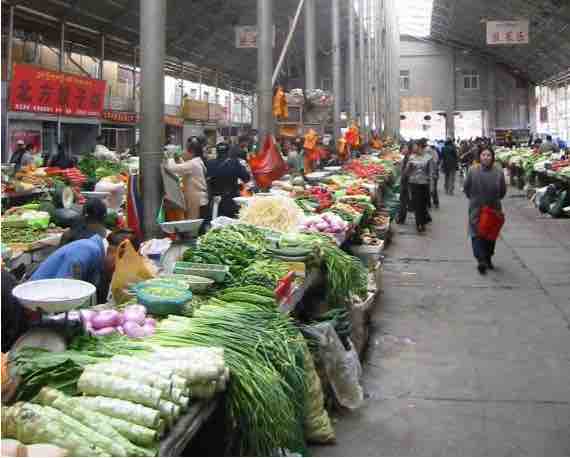Overview: The Advantages of a Mixed Economy
A mixed economy permits private participation in production, which in return allows healthy competition that can result in profit. It also contributes to public ownership in manufacturing, which can address social welfare needs.

Marketplace
Private investment, freedom to buy, sell, and profit, combined with economic planning by the state, including significant regulations (e.g. wage or price controls), taxes, tariffs, and state-directed investment.
The advantage of this type of market is that it allows competition between producers with regulations in place to protect society as a whole. With the government being present in the economy it brings a sense of security to sellers and buyers. This security helps maintain a stable economy.
Overall, businesses, as well as consumers, in mixed economies have freedoms that are important to both. And while government is actively involved and provides support, its control is limited, which is good for structure.
The Details: The Advantages of a Mixed Economy
- In a mixed economy, private businesses can decide how to run their businesses (e.g. what to produce, at what price, who to employ, etc.).
- Consumers also have a choice in what they want to buy.
- In this system, there is also less income inequality.
- Monopolies, market structures that are the only producer of a certain product, are allowed under government watch so they do not make it impossible for entrepreneurs in the same industry to succeed.
More specifically:
The elements of a mixed economy have been demonstrated to include a variety of freedoms:
- to possess means of production (farms, factories, stores, etc.)
- to participate in managerial decisions (cooperative and participatory economics)
- to travel (needed to transport all the items in commerce, to make deals in person, for workers and owners to go to where needed)
- to buy (items for personal use, for resale; buy whole enterprises to make the organization that creates wealth a form of wealth itself)
- to sell (same as buy)
- to hire (to create organizations that create wealth)
- to fire (to maintain organizations that create wealth)
- to organize (private enterprise for profit, labor unions, workers' and professional associations, non-profit groups, religions, etc.)
- to communicate (free speech, newspapers, books, advertisements, make deals, create business partners, create markets)
- to protest peacefully (marches, petitions, sue the government, make laws friendly to profit making and workers alike, remove pointless inefficiencies to maximize wealth creation).
They provide tax-funded, subsidized, or state-owned factors of production, infrastructure, and services:
- libraries and other information services
- roads and other transportation services
- schools and other education services
- hospitals and other health services
- banks and other financial services
- telephone, mail, and other communication services
- electricity and other energy services (e.g. oil, gas)
- water systems for drinking, agriculture, and waste disposal
- subsidies to agriculture and other businesses
- government-granted monopoly to otherwise private businesses
- legal assistance
- government-funded or state-run research and development agencies
Such governments also provide some autonomy over personal finances, but include involuntary spending and investments, such as transfer payments and other cash benefits, including:
- welfare for the poor
- social security for the aged and infirm
- government subsidies to business
- mandatory insurance (e.g. automobile)
They also impose regulation laws and restrictions that help society as a whole, such as:
- environmental regulation (e.g. toxins in land, water, air)
- labor regulation, including minimum wage laws
- consumer regulation (e.g. product safety)
- antitrust laws
- intellectual property laws
- incorporation laws
- protectionism
- import and export controls, such as tariffs and quotas
- taxes and fees written or enforced with manipulation of the economy in mind